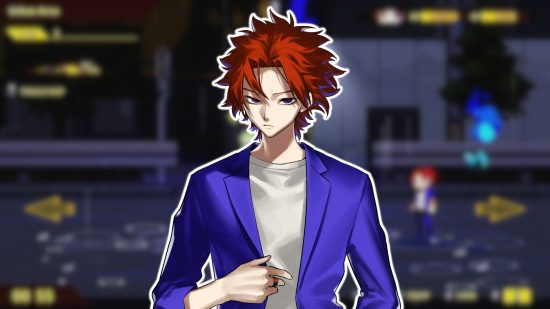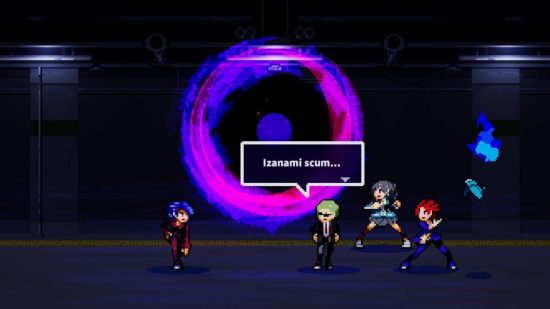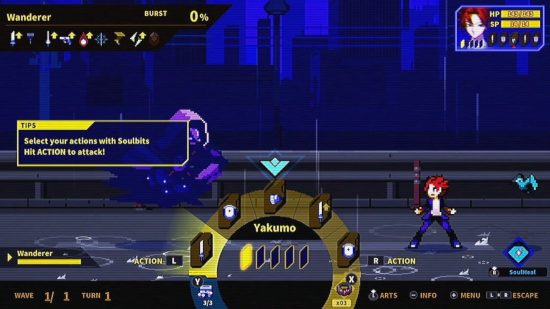My partner is obsessed with deckbuilding games. So much so that I’ve absorbed a lot of knowledge about the genre through watching them play countless hours of Slay The Spire, Wildfrost, and many others. I was excited to try out Soulvars because it promised to combine the art style and story of games that I love with the mechanics of her favorite genre. What’s the point of getting to review a game if you can’t share it with someone you love, right?
Publisher Shueisha Games describes Soulvars as a “pixel art turn-based deckbuilding RPG”, ticking so many boxes in my mind of what makes a good game. So you can imagine my surprise while playing the game that I can’t find any semblance of a deckbuilding mechanic in sight. Every other part of the description is there: beautiful pixel art, traditional JRPG turn-based combat, but definitely no deckbuilding.
When I was only a little bit into the game I presumed that I was in a tutorial level and the deckbuilding would come later, but I still haven’t encountered it. While fun and unique, the Soulbit combat system heralded as Soulvars’ deckbuilding element just cannot be described as that. Compared to games like Wildfrost, Slay The Spire, and Inscryption, the Soulbit system is essentially just a way to chain combos. So if you only take one thing from this review, let it be this: Soulvars is not a deckbuilder.
What Soulvars is is a beautifully animated JRPG following Yakumo and his Soulbearer colleagues as they beat up dangerous Dominators infesting the streets of Japan. You work for the private military contractor DDO (Dominator Disposal Organisation) and use your various Soulbit combos to take out threats day and night. Other than the very basics, I can’t really get to grips with the story that Soulvars is trying to tell, but I’m having a good time nonetheless.
This is definitely a game for people who don’t mind doing a bit of reading. Each loading screen is packed with handy hints and there’s a fairly comprehensive combat tutorial at the very beginning, but it’s filled with a lot of game universe-specific terminology so I’ll admit the majority of it fell out of my brain almost immediately after reading it. At first I struggled with the various items and equipment I picked up, not knowing what to do with all of it. Luckily, there’s an extremely handy resource in the pause menu that helped me get to grips with everything a lot faster – the DDO NaviMenu.
This menu has it all! Tooltips, explanations of Soulbit combos, enemy data, a glossary of terms, and much more. My gameplay experience since finding this menu has been a lot smoother. Knowing that I can look something up any time I have an issue makes Soulvars a lot less stressful. However, I know that this kind of tutorial can be terrible for many people. Generally, I prefer games to teach me everything I need to know as I progress through a game and I think that hiding all of this information in a not-immediately-obvious menu is inaccessible as hell, but at least it exists and you’re not left completely in the dark.
It’s clear that Soulvars is inspired by old JRPGs and that the developers poured a lot of love into this project. There’s the option to apply a VHS-style filter to the game to make it feel closer to the inspiration source material which I appreciate, and the menu says you can switch between illustrations and pixel art. I’ve flicked this switch a few times because I really love the illustration style of the game’s key art, but I haven’t noticed any change in my gameplay. Where are my illustrated team members?
I realize that this review sounds extremely negative, but I’ve had a pretty good time so far playing Soulvars despite it not being the game I expected in the slightest. There’s something very satisfying about dungeon crawling and turn-based combat that must be why the genre is still thriving today. Running into the same enemy type repeatedly gets a bit tedious, but I’ve only really experienced that issue through my own fault, getting lost and not knowing how to use the map. Each battle I start makes me feel stronger and I’m running away from fewer and fewer strong enemies.
Performance-wise, Soulvars runs like a dream on the Switch. It’s not that surprising given the pixel art style and the console’s massive catalog of existing JRPG titles, but it still felt great to play the game for the first time undocked and not want to throw my Switch out the window. Menus are sized well for docked and undocked play, and I think I prefer playing it undocked to almost emulate playing a Game Boy Advance game from my childhood.
My time with Soulvars so far has been frustrating but enjoyable, and it’s really hard to summarise the game for review given how many twists and turns I feel like I’ve experienced along the way. I know for a fact that long-time JRPG fans will probably like this game a lot, and I can think of many other types of people that would hate it. My best advice would be to check out some gameplay clips and decide for yourself if you’ve got what it takes to understand Soulvars’ story and mesh with its mechanics.
If you’re one of the aforementioned JRPG fans, check out our Final Fantasy Pixel Remasters review to get some insight into the pixel-perfect collection. We’ve also got a comprehensive guide to the best JRPGs on the Nintendo Switch.
Soulvars Switch review
Soulvars is a pixel art JRPG that’s definitely not a deckbuilder, no matter what the synopsis tells you. It’s beautiful to look at and fun to play once you get to grips with it.














